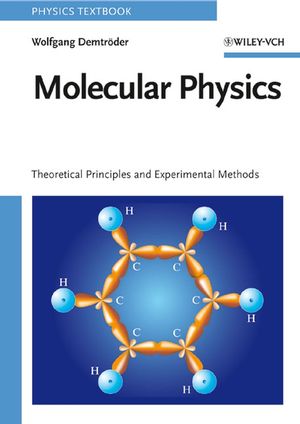Molecular Physics: Theoretical Principles and Experimental MethodsISBN: 978-3-527-40566-4
Paperback
484 pages
December 2005
 This is a Print-on-Demand title. It will be printed specifically to fill your order. Please allow an additional 10-15 days delivery time. The book is not returnable.
|
||||||
The richly illustrated book comprehensively explains the important principles of diatomic and polyatomic molecules and their spectra in two separate, distinct parts. The first part concentrates on the theoretical aspects of molecular physics, such as the vibration, rotation, electronic states, potential curves, and spectra of molecules. The different methods of approximation for the calculation of electronic wave functions and their energy are also covered. The introduction of basics terms used in group theory and their meaning in molecular physics enables an elegant description of polyatomic molecules and their symmetries. Molecular spectra and the dynamic processes involved in their excited states are given its own chapter. The theoretical part then concludes with a discussion of the field of Van der Waals molecules and clusters.
The second part is devoted entirely to experimental techniques, such as laser, Fourier, NMR, and ESR spectroscopies, used in the fields of physics, chemistry, biology, and material science. Time-resolved measurements and the influence of chemical reactions by coherent controls are also treated. A list of general textbooks and specialized literature is provided for further reading.
With specific examples, definitions, and notes integrated within the text to aid understanding, this is suitable for undergraduates and graduates in physics and chemistry with a knowledge of atomic physics and familiar with the basics of quantum mechanics.
The second part is devoted entirely to experimental techniques, such as laser, Fourier, NMR, and ESR spectroscopies, used in the fields of physics, chemistry, biology, and material science. Time-resolved measurements and the influence of chemical reactions by coherent controls are also treated. A list of general textbooks and specialized literature is provided for further reading.
With specific examples, definitions, and notes integrated within the text to aid understanding, this is suitable for undergraduates and graduates in physics and chemistry with a knowledge of atomic physics and familiar with the basics of quantum mechanics.



